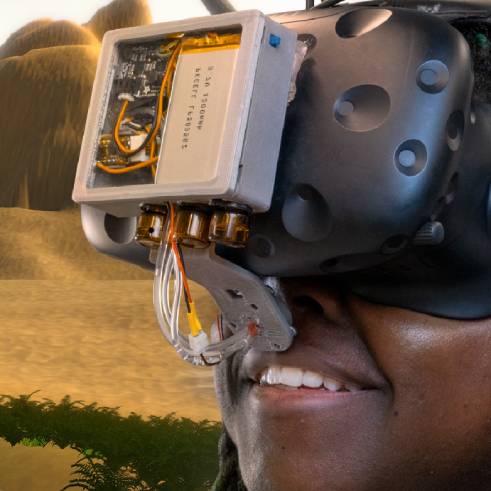VR Systems Can Now Hack Your Nose To Deliver Temperature Sensations
These VR systems can make you feel cold and hot via the sensation of smell, even though you would not actually be smelling anything.
Virtual Reality has come a long way in a very short period. It has permeated a lot of industries across the world in no time at all. We currently know virtual reality to provide us with amazing sensory experiences vis-à-vis sound and sight. Simply by putting on a headset and plugging in your earphones, you can experience VR at its best. To add to this sensory delight, a team of researchers from the University of Chicago has recently come up with an efficient way of delivering VR temperature sensations by hacking your nose.
Our noses house the trigeminal nerve that can be accessed using a series of chemicals. As a result, VR systems can make you feel cold and hot via the sensation of smell, even though you would not actually be smelling anything.

Jas Brooks, first author, shares, “The temperature sensation was largely localized to the face and definitely tied to breathing. I didn’t smell anything, but I felt an increasing sense of warmth as though my face was being warmed by sunlight for a while.” By triggering the receptors present in the trigeminal nerve, VR systems can allow users to feel a sensation of warmth on their faces, although they would not be able to detect any smell.
The researchers have also developed something called “pink smell,” which is akin to pink noise. Pink noise comes from white noise that aims to drown out all the other noises by way of producing static. Hence, white noise is completely random, whereas pink noise is balanced so that it sounds deeper than it really is. Pink smell, in effect, does the same thing for smells as pink noise for sounds. It uses balanced unidentifiable odors so that other odors can be drowned out.
As shared by Brooks, “It’s a confusing sensation, which is precisely what it is designed to achieve. You can immediately smell something, but it was hard for us (authors) to recognize what any odor was exactly because of the olfactory noise, even when we tried it with menthol.”
Brooks and the team are all set to present their work on June 30th in a free online symposium.




 AR
AR VR
VR